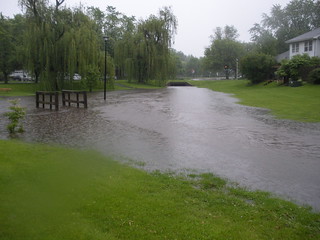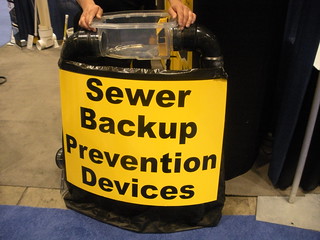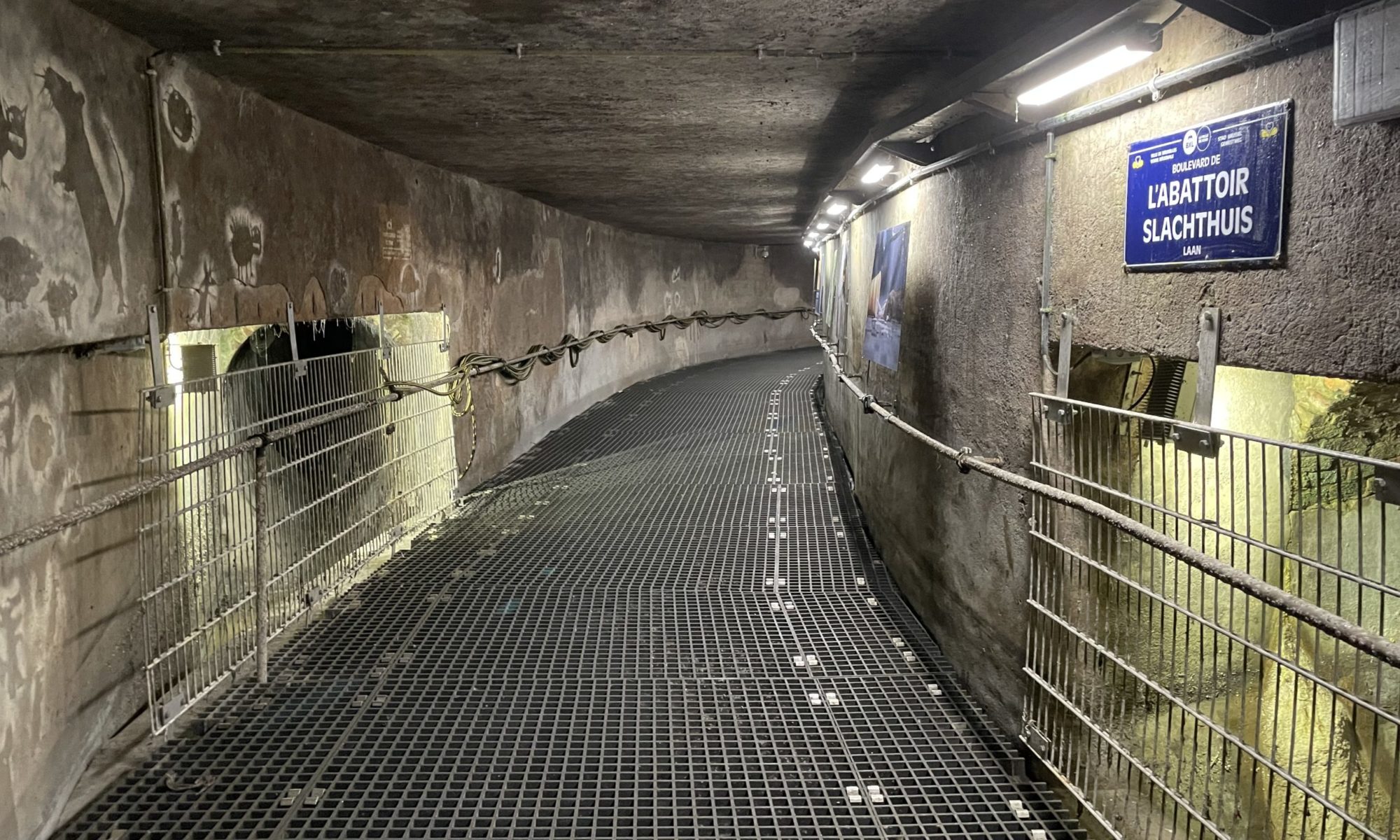 Buying a home is probably one of the biggest purchases we will make in our lives. It's also something that many of us end up living with for an extensive period of time. In my lifetime, I have been involved in the purchase of five homes, but the tips I am going to share with you were not gained through my home-buying experience. Nope, I picked up these tidbits of caution and information while working at different cities trying to help others who bought a home and were dealing with problems they either did not know about or anticipate. And because of this, the tips I'm giving are specifically focused on buying homes in a city, but could possibly apply to other jurisdictions.
Buying a home is probably one of the biggest purchases we will make in our lives. It's also something that many of us end up living with for an extensive period of time. In my lifetime, I have been involved in the purchase of five homes, but the tips I am going to share with you were not gained through my home-buying experience. Nope, I picked up these tidbits of caution and information while working at different cities trying to help others who bought a home and were dealing with problems they either did not know about or anticipate. And because of this, the tips I'm giving are specifically focused on buying homes in a city, but could possibly apply to other jurisdictions.
Check your zoning and the rules for that zoning
This is not as much fun as checking out the pool in the backyard, but it can end up playing a critical part in your future happiness. Contrary to popular belief, we might live in America, but that does not mean we are free to do whatever we want on our own property. Everything you do on your property is subject to a set of rules determined by the zoning set for your property. If you buy the parcel with grand plans for new garages or a home business or a place to park all your cars and boats, you might want to first make sure all that will be allowed on your property. The other reason to check zoning is to make sure you don't get any surprise neighbors. That vacant parcel next door might look pretty good today, but if it is zoned other than single-family residential, be prepared to someday wake up and maybe find yourself staring at or hearing (or smelling?) a doggy daycare.
Check to see if the home is part of a homeowners' association
This can have positive and negative consequences. Some properties not only have to follow zoning rules, but also subdivision rules typically referred to as covenants. If a subdivision is built-out, covenants are regulated not by the city, but by the homeowners' association. (If it is not built out, the developer typically adminsters the covenants.) So prior to purchase read the covenants to make sure you are allowed to use the property as you would like to. Another issue to research is whether or not you will pay a homeowner association fee. Each subdivision can have a wide range of assets for which properties in that development are responsible. Some only pay for a sidewalk while others might pay for swimming pools or in the case of townhomes the repair of the structures. And if your developer didn't want to follow city subdivision rules and the infrastructure in your subdivision was never accepted by the city, you will most likely also be responsible for helping to pay for the maintenance and repair of roads, sewer, water, etc. The positive side of this is that a homeowners' association can provide benefits by ensuring uses in the development remain as intended, offering added amenities not available to others in the city, or providing maintenance for common areas.
Make sure there is good drainage on and away from the property
Not thinking about drainage prior to purchase can definitely lead to problems later. Whether it's a home that sits in a bowl because the ground does not drain away from the foundation or a home in an area with high groundwater, or a home lying close to quiet, serene waterways or drainage paths that turn to raging rivers during a storm, you'll want to make sure you know what you're getting into before you buy. To get an idea of how much of a problem water can be when it rains, take some time to check out these things:
- Walk around the house and note the downspouts – are they hooked up, do they extend far enough away from the home, is it easy for the end to become blocked (you can't imagine how much water drains off a roof during a rain)?
- Walk around the house and note if the ground drains away from the house or towards the home – particularly towards any windows, walkouts, or window wells in the foundation.
- Walk around the property – does it look like the land around the property drains away or towards this home's property? Are there drainage basins near the property lines, and if so, does it look like they could easily become covered? If good drainage of this home's lot depends on that opening staying clear, will you have control over that or would you have to depend on a neighbor to keep it open because it is on their property or behind their fence?
- Look at how the height of the home's foundation, the garage door, and other openings such as window wells compare to the road – is the road above these openings? If the road is above these openings, there is a very good chance water will drain from the road towards these openings.
- Look in the basement for a sump pump – if the sump pump stops for any reason such as pump failure or electric outage, will your lower level flood? Will this be a problem because of a finished lower level or a need to store items there, or because of heating or other equipment or appliances? Check to see if the pump has a battery backup. If there is one, will that be sufficient to protect the lower level? If there are pumps in other areas of the home such as depressed patios, will failure of the pump cause damage in these areas? Is there something that can be done to protect or eliminate that problem?
 It is also important to look at the subdivision plat and drainage plans for the property. These plats and plans can usually be found at the public works/engineering departments of the city. The plans will typically show drainage paths. Some subdivisions are designed to create overland flood routes where water is channeled during a major storm event. If the property lies next to one of these routes, are the openings into the home above the expected flood elevations in these routes? Typically homes next to these routes have restrictions on how low openings can be into the home, but if previous owners were not aware of these restrictions and made changes to the home, openings could have been created too low.
It is also important to look at the subdivision plat and drainage plans for the property. These plats and plans can usually be found at the public works/engineering departments of the city. The plans will typically show drainage paths. Some subdivisions are designed to create overland flood routes where water is channeled during a major storm event. If the property lies next to one of these routes, are the openings into the home above the expected flood elevations in these routes? Typically homes next to these routes have restrictions on how low openings can be into the home, but if previous owners were not aware of these restrictions and made changes to the home, openings could have been created too low.
And while you are talking to the public works/engineering department, you can ask if they have any records showing drainage or flooding problems for that particular property. Another good place to check for potential flooding issues is the FEMA website. This site allows you to type in an address and pull up a map to see if a property lies in an area designated as a floodplain. Even if you discover the home and other structures are outside a floodplain, note if any other part of the property lies within one because this might prevent you from making improvements to the lot in the future in the portion of the property lying within the floodplain.
Adjacent improvements
As you walk around the property, note any infrastructure such as waterways or bike paths or sidewalks. Ask who maintains these. Some creeks and other improvements might naturally degrade causing a loss of soil or other changes to the property. If this occurs, is the homeowner responsible for the repair or will a homeowners' association or other entity make the repair?
Another item to note is the type of roadway. Some streets are constructed with curb and gutters while others have only ditches with no curbs or gutters. The cost of these improvements are reflected in the cost of the property so if you purchase a lot on a road with no curb/gutters or even sidewalks, it did not include a cost for these types of improvements. If after you purchase, you decide that you do not like that the edge of the road or the ditch is difficult to maintain, and you would like to change it, be aware that this change might not happen so easily. The city will not typically construct these improvements at no cost to the property owners along that street. The reasoning behind this is why should all the taxpayers in a city pay to improve specific properties other than their own, particularly if city revenues are so low that the city can barely keep up with just maintaining pavement? However, there could be some cities that have made the decision to make these types of improvements at no cost to the property owner. So it might be helpful to check with the city to find out their policy for upgrading roadways and streets if that would make a difference in your purchase.
Also keep in mind some roads are private and not maintained by the city. If the property is located on a private roadway, the homeowner could end up responsible for all costs related to maintenance of that roadway.
Easements
While you are checking out the subdivision plat for drainage issues, also look to see what easements are located on the property. It is very typical to have at least a five-foot easement or reservation along all side and rear property lines for utility placement. There can also be wider easements for water or sewer lines or for drainage ways. If a pipe or other utility has been placed in these easements, be aware that at some point, the utility company might need to get in there to make repairs. Improvements or landscaping are not supposed to be placed in these easement areas; however, many times property owners either ignore or are not aware of these easements so swimming pools, fences, and gardens end up in these locations. If the utility company damages these improvements while making necessary repairs, the property owner might not be reimbursed for any damages. So it is helpful to find out the policy from the specific utility companies on how they handle entry and damage to improvements made in their easements. Also if there is a drainage easement, it is important for these to remain completely clear or flooding can occur. Note any potential blockages that have been placed in these areas. And be aware of their locations and how they might affect any planned improvements to the site.
Sewers
I know no one wants to think of sewers when they are shopping for a new home, but I think it is pretty safe to say no one likes sewage flowing into their home. So a little bit of research up front can go a long way to minimizing problems later on. One of the most important things to remember is that if a home has a sewer, and most in a city do, there is always a chance that something can happen to cause sewage to back up into a home. The key is to understand why and what can be done to minimize the chances of a backup. Most of the time, backups are due to something that is wrong with the private sewer from the home to the main. These problems can be caused by blockages from roots, dirt or other debris from failed pipes, or just faulty pipe construction. Cities usually keep track of backups so you can find out if a home has had regular backups by contacting the city keeping in mind that one backup is not an indication there is a problem. What you are looking for is a record of constant and regular backups. You can also televise a private sewer to make sure there are no problems.
 The other reason a home might experience sewer back ups is due to overloading of the city sewers during a rain event. Some cities still have what is known as combined sewers. These are pipes that normally carry only sewage, but during a rainfall, might also carry stormwater. Unfortunately, these combined sewers were not sized to carry a very large storm so when they fill up, the water can back up into homes. The EPA is working with cities to eliminate this problem, but it is very costly and might not have been addressed yet in some communities. And most insurance companies for cities will not pay property owners for sewer backups so you might need your own insurance to cover backups if they occur. You can find out if a property is hooked up to a combined sewer by calling the city's public works/engineering department. That department can also tell you if that particular line experiences backups during a storm. Also keep in mind, there are things that can be done to help prevent backups in a home from a combined system, and a home might already have these in place, or they could be installed after purchase.
The other reason a home might experience sewer back ups is due to overloading of the city sewers during a rain event. Some cities still have what is known as combined sewers. These are pipes that normally carry only sewage, but during a rainfall, might also carry stormwater. Unfortunately, these combined sewers were not sized to carry a very large storm so when they fill up, the water can back up into homes. The EPA is working with cities to eliminate this problem, but it is very costly and might not have been addressed yet in some communities. And most insurance companies for cities will not pay property owners for sewer backups so you might need your own insurance to cover backups if they occur. You can find out if a property is hooked up to a combined sewer by calling the city's public works/engineering department. That department can also tell you if that particular line experiences backups during a storm. Also keep in mind, there are things that can be done to help prevent backups in a home from a combined system, and a home might already have these in place, or they could be installed after purchase.
Neighboring properties
As you are walking around the property to check out the drainage, also note any landscaping in adjacent properties. Look for trees or shrubs that might already encroach over the line or might be close enough to encroach in the future. This encroachment might not be a problem for everyone, but sometimes it is so be aware of how you might have to handle cutting trees or bushes back to the line.
Nuisances
Another item to notice as you walk around outside are any potential nuisances. These can be just about anything depending on what types of property uses might deter you from enjoying your property. They seem to be different for everyone, so I am going to list a few I've had people complain about, but keep in mind these do not bother everyone so my intention is not to present them as actual nuisances because some people view these as benefits to the property.
- Railroads
- Bike Paths
- Parks (particularly loudspeakers from pools and ball diamonds in the summer)
- Schools (high schools might be particularly an issue with parking)
- Factories/Industries
- Restaurants or other commercial uses
- Highways/busy roads
 Unfortunately when shoppping for a home you only spend a short amount of time at the property so you might not even notice these until after you have moved in. And only then do you realize that this use is a problem. The key to remember is that as a property owner, you have little to no control over a use that is already in place when you purchase. For example, if I buy a home across from a school during the summer and then in the fall realize I can't stand all the traffic in the school year from dropping off and picking up kids, it is not reasonable for me to expect everyone to somehow get rid of all the cars or to relocate the school. But it is understandable that I might not have been aware of just how significant the traffic is because of when I purchased the home. So spend some time just hanging out in the yard looking around at what is nearby. Listen to the sounds, try to identify any smells, and if you see neighbors ask them if there are any traffic, odor, or noise issues they experience at any time in the year.
Unfortunately when shoppping for a home you only spend a short amount of time at the property so you might not even notice these until after you have moved in. And only then do you realize that this use is a problem. The key to remember is that as a property owner, you have little to no control over a use that is already in place when you purchase. For example, if I buy a home across from a school during the summer and then in the fall realize I can't stand all the traffic in the school year from dropping off and picking up kids, it is not reasonable for me to expect everyone to somehow get rid of all the cars or to relocate the school. But it is understandable that I might not have been aware of just how significant the traffic is because of when I purchased the home. So spend some time just hanging out in the yard looking around at what is nearby. Listen to the sounds, try to identify any smells, and if you see neighbors ask them if there are any traffic, odor, or noise issues they experience at any time in the year.
Another thing to keep in mind with this issue is that someone might have tried to minimize the nuisance with fencing, walls, or landscaping. If these are not on your property and under your control, be aware that they might go away at some point, and you might not have any control on replacing them.
Seasonal Issues
This might not be a problem everywhere, but I bring this one up mainly because I live where it snows. And if you buy a home anytime it is not winter, it's easy to forget how awful it can get when it snows. Unfortunately when it does snow, we need to put that stuff somewhere. So as you are hanging around on the property listening, smelling, and hoping a neighbor stops by, think about the winter (if you are in "snow country") and visualize where you will put the snow from your driveway. Also think about where the city might put the snow from your road. Most of the time, the snow from the road will end up a pile at the curb or end of the driveway which happens to everyone and cannot be avoided. But if there is an open field across from the house or the home is in a cul-de-sac, snow might end up somewhere and in a large enough quantity that it causes problems you won't want. This is another good thing to ask the neighbors about so you aren't surprised after that first, big snowfall.
Nighttime issues
Another good idea is to check out the property at night. If you only look during the day, you might not get a good feel for the level of activity in the neighborhood when people are off school and work. Also, notice the level of lighting near the property. The lighting is determined by the city so if you believe there is not enough or too little, you might not be able to get it changed unless you add lights on your own property at your own cost.
Home Interior
I could write a whole other post on this, but I won't go into it all because there are so many items to check and many require a professional background to properly inspect. So my advice on this is, if you don't have that professional background yourself, have a home or building inspector inspect the house for any problems or deficiencies.
Below is a checklist you can print out and take with you on your home buying adventures. This cheat sheet summarizes the items described in more detail above. And if you have any other tips you think should be added, please comment below or email us your experiences.
Public Works Group Home Buying Tips and Cheat Sheet

